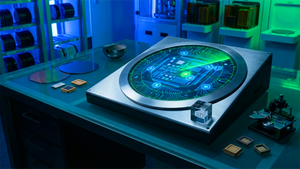Everything you need to know about creating a VR lab studio when planning new construction projects or renovations at medical schools.
The goal here is to provide as much realism as possible, to make a convincing experience for the user, by providing real-time, high-end game-quality visual environments with haptic (touch) feedback.”
AUSTIN, TEXAS, UNITED STATES, July 1, 2021 /EINPresswire.com/ -- In their recent forecast of emerging market trends in 2021, the consulting giant Deloitte predicted that the fastest-growing market for digital reality products and services (defined by Deloitte as Virtual, Augmented and Mixed Reality) will be the enterprise and education markets, driven by the rapid adoption of virtual training applications.— Formaspace
In keeping with this trend, many virtual reality (VR) developers are targeting medical schools, where they are finding a welcome reception for new virtual reality-based training products.
We’ll take a look at what facility planners, architects, and designers need to know about this fast-growing market, as well as provide tips on how to accommodate VR lab studios when planning new construction projects or major renovations at medical schools.
Key Benefits Of Using VR-Based Training Applications In Medical Education
Why the rapid uptake of VR-based training by medical schools?
The answer likely lies in the storied history of simulation training at many leading med schools, which pioneered the use of Simulation-Based Medical Education (SBME) tools and personnel.
Dedicated SBME centers in med schools have been at the leading edge of created realistic simulated environments long before virtual reality appeared on the scene.
For example, SMBE innovators pioneered the use of realistic human mannequins with functioning prosthetic body parts that allow students to practice examination procedures, life-saving emergency room procedures, and even simulated surgical operations.
SMBEs have also long relied on the employment of human “simulated patient” actors who help train young medical students on how to conduct one-on-one patient encounters – well before they ever meet their first live patient.
It’s in this spirit of innovation that leading-edge VR applications have found a welcoming audience among SMBE professionals, who can appreciate many of the benefits that well-designed VR-based simulation tools can offer in medical school training, including:
1. Creating A Safe, Simulated Environment For Students To Learn New Skills And Techniques – And Even Make Mistakes – Without The Consequences Of Interacting With A Live Patient.
2. Improving Patient Outcomes By Allowing Students (Or Practicing Doctors Returning To Learn A New Technique) To Gain Experience And Build Expertise Through Targeted Training Applications; For Example, Learning New Surgical Techniques.
3. Providing Educators With A Way To Perform Direct Formative And Summative Skill Assessments Of A Learner’s Progress, Which Can Be Difficult When Relying On Written Tests Or Other Traditional Assessment Methods.
4. Reducing Costs In Many Cases, For Example, By Allowing Students To Practice At Their Own Pace Without Driving Up The Labor Costs Of Instructors Or Staff.
5. Allowing Students, Even Those Located Thousands Of Miles Away, To Work Together In A Virtual Environment And Learn From Each Other.
What Is The State-Of-The-Art In VR Training Applications For Medical Education?
From a facility planning point of view, we can divide the VR market into two broad categories.
The first category is the high-fidelity VR market, one that offers users (who wear specially designed headsets known as VR goggles) a full-immersive, photorealistic representation of the world.
The goal here is to provide as much realism as possible, to make a convincing experience for the user, by providing real-time, high-end game-quality visual environments with haptic (touch) feedback, for example, when handling a virtual tool, such as a scalpel in the case of a surgical training simulation.
This real-time immersive experience comes at a cost, however. It requires a major capital investment to acquire and maintain the sophisticated computer graphics hardware and the high-end headsets worn by the users, as well as the cost to develop or acquire the software running the training simulation.
(We’ll address the hardware and software budgets shortly, with updated information provided by Oguz Ormanci.)
High-fidelity simulations have their place, but educators have also found quite a few training simulations can be accomplished with economical, low-end consumer-grade headsets, including the barebones Google Cardboard headsets, which, as the name implies, are literally made out of folded cardboard with a cubby hole to insert a smartphone which serves as the screen.
Sadly, Google recently discontinued making the Cardboard headsets, but other vendors have stepped in with inexpensive consumer headsets.
These low-powered systems don’t offer the same level of realism, so users won’t feel as if they are in a fully immersive environment, but for many well-designed training applications, it’s quite sufficient.
The advantage of these “cheap and cheerful” (to borrow an expression from the Brits) low-cost VR systems is that they can be deployed widely – using ordinary high-speed internet connections, which offer students access to VR-based learning tools from the comfort of their home, dorm room, classroom, or student laboratory. They also open up the opportunity for students from around the world to work together in the same VR simulation in a 3D version of a Massive Open Online Course (MOOC).
VR Lab Studio Space Planning And Staffing Strategies
If you an architect or designer working on a medical education facility project, be it a brand new facility or a major remodel, you’ll want to include space for a VR Lab in your programming proposals – even if your client doesn’t have immediate plans for a VR implementation.
Where to locate the VR lab within the educational institution is an interesting question in itself.
As a new technology, a VR lab could “fit” within one or more different organizational departments.
The ideal location will depend on the client, including whether they are starting from scratch or if they have the option of leveraging existing facilities and/or staff talent. Also important is whether it’s a high-end VR solution or a low-end solution, as the hardware and space requirements are different.
Here are the most common departments that could “own” a VR lab in a medical education setting.
1. Simulation Center
Many medical schools have or are in the process of creating dedicated SBME facilities to educate medical students, and these can be the ideal location for siting a new VR lab.
For example, the new Health Education Center at UTMB features a working ambulance dock, two simulated operating rooms, ten ICU rooms, over 30 private exam rooms – all dedicated to creating a simulated hospital environment for training med students. In planning this new facility, a large portion of the main floor was set aside for the development of a future VR lab.
In such a simulation center, the medical training staff could be leveraged to conduct VR-based training, but additional technicians would need to be brought in to service and maintain the advanced VR lab equipment.
2. Desk-Based VR Maintained By The Help Desk
At the other end of the spectrum are low-cost headset-based systems that can be provisioned and used anywhere that has access to high-speed internet.
In this scenario, it’s plausible to leverage the existing Help Desk services to provide technical support for the students and instructors.
3. Library
Another candidate department suitable for “hosting” a VR lab is an educational institution’s medical library, which has extensive experience in sourcing, maintaining, and organizing access to materials and equipment used by instructors and students.
Read more...
Julia Solodovnikova
Formaspace
+1 800-251-1505
email us here
Visit us on social media:
Facebook
Twitter
LinkedIn









